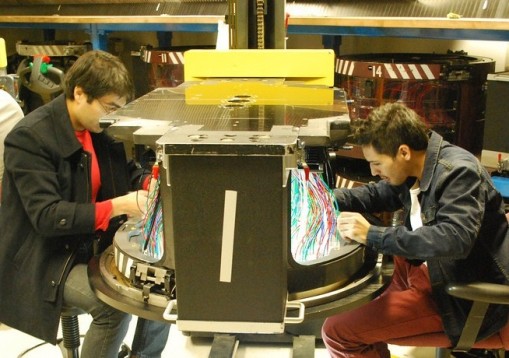This week a number of SDSS-IV and especially APOGEE-2 members have been visiting the Chilean Participation group of SDSS-IV. The workshop “Sharing One Sky”, hosted by the University of Valpariso, in Vina del Mar, Chile, provided the opportunity for APOGEE/SDSS-IV education and public outreach enthusiasts to share ideas and learn from the Chilean astronomical community about how to communicate SDSS and APOGEE science in Chile and around the world.
The bi-lingual Spanish-English programme was as follows:
First session: Introduction to the SDSS/APOGEE Survey and Outreach Efforts
Chairman: Ed Murphy
An Introduction to APOGEE, Steven Majewski
Education and Public Outreach with the SDSS, Karen Masters
Dual-‐‑Language Outreach Efforts for the APOGEE-2 Survey, David Whelan
SDSS Plate Distribution, Nicholas MacDonald
Second session: Internet-Focused Outreach
Chairman: David Whelan
Bling Bling Universe: Sharing the SDSS with Chilean Students, Nestor Espinoza
Finding our Place in the Mass Media: A View from the Star Tres Initiative, Javiera Rey
Startres.net, the Evolution of a Blog in the Social Media, Karina Rojas
Citizen Science in Astronomy with the Zooniverse, Karen Masters
Explora: Programa Nacional de Divulgación y Valoración de la Ciencia y la Tecnología, Maria Escobar
Outreach and Education Efforts by UNAM in Mexico, Mariana Cano
Astronomy outreach at the Museo Interactivo Mirador, Sergio Vásquez
Third Session: Outreach in Chile
Chairwoman: Mariana Cano
Outreach Efforts with the VVV Survey: Lessons Learned, Dante Minniti
Reaching for the stars: UDP Inclusive Astronomy Outreach Experience, Erika Labbe
El bicho de la Ciencia: contigo la ciencia tiene sentido, Sergio Balbontin
Difusion Astronomia AIUC, Paulina Troncoso Iribarren
Astronomy Outreach in V Region, Nikolaus Vogt
Fourth Session: Institution-‐‑Based Outreach
Chairman: Dante Minniti
Astronomy EPO Programs at the University of Virginia, Edward Murphy
Dark Skies, Bright Kids, Kelsey Johnson (given by David Whelan)
An Integrated Research, Curriculum Development, and Teaching Project in Solar System Astronomy, Christopher Palma
Outreach within the Center for Excellence in Astrophysics and Associated Technologies (CATA), David Altair
For SDSS collaboration members, many of these talks are available to download on the SDSS Wiki (password protected, please email outreach@sdss.org if you would like access to a specific talk).
You can also read this Storify of Tweets on the #sharingonesky hashtag (a mixture of Spanish and English language tweets).
Many new colleagues were met, and we are confident that some wonderful EPO collaborations will come out of this meeting, which is hoped to be the first in a series.









